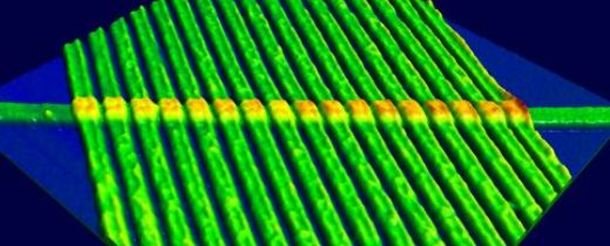Forget SSDs, here comes ReRAM

According to august engineering journal the EE Times, solid state storage specialist SanDisk is working on bringing a new form of system memory known as 'ReRAM' to market, a fact apparently revealed in a job ad posted on the company's website last week .
Why is this interesting? Because ReRAM, or 'resistive RAM' , is one of those disruptive technologies like wireless power or 4G that's been under development for years, but is suddenly looking like it might happenin our lifetime. ReRAM could, if manufacturing kinks are worked out, replace both system RAM and hard drives in PCs of the future.
ReRAM is being touted as the successor to both current system memory chips and hard drives. And it's not just SanDisk that's been showing an interest in this super-storage of late.
The importance of ReRAM is that it combines the read/write speeds of DRAM – the stuff on those memory chips in your PC – with the non-volatile nature of flash memory. In other words, they don't forget stuff when you turn the power off. Potentially, it's the best of all existing technologies: bulk storage that runs at system memory speeds.
Theoretically, a PC with enough ReRAM memory in would mean no more loading times, ever. All your data would always be kept in the equivalent of today's system RAM.
On top of that, ReRAM is expected to require little power, and it can be manufactured on tiny manufacturing processes with high yields.
The principle of the ' memrister ', upon which ReRAM is based, has been around for 40 years. Memristers work by 'remembering' the amount and polarity of current that passes through them as electrical resistance, which enables them to store data in ReRAM. HP believes that memristers have other potential uses as logic gates and switches that "could one day, for example, act like synapses inside computer circuits, mimicking the behavior of neurons in the human brain".
The biggest gaming news, reviews and hardware deals
Keep up to date with the most important stories and the best deals, as picked by the PC Gamer team.
Interest in memristers and ReRAM has spiked in the last few week, moving from highly specialised news feeds to mainstream tech sites including the BBC . Up until now, ReRAM has been most closely associated with HP which has led development of the technology. In January, however, Japanese firm Elpida which put out a press release that claimed it had a working ReRAM protoype that was capable of switching state at 10 nanoseconds – the same as DRAM.
Then, at the start of this month, 'Technology Licensing Company' Rambus – a well known player on the patent district circuit – announced it had acquired Unity Semiconductor for $35m . Unity's CMOx technology is another candidate for the grand unification of memory theory, which includes patents that cover memristor interfaces too.
Other familiar names who are working to commericialise ReRAM include Sony, Panasonic, Micron, Hynix, DSI and more.
Expect a lot of news about ReRAM over the coming months. Hynix and Elpida both reckon they'll have ReRAM-based chips in production some time next year.
(Image credit: HP Labs)

